May is the month of Memorial Day, which is to honor those who have served in any wars or conflicts the United States, has participated in. I have selected some non-fiction books to highlight here but you can find more at Headquarters on the Third Floor across from the back Information Desk. You can also search here for books, documentaries, and even movies concerning military actions.
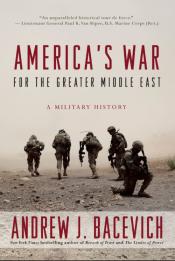
From the end of World War II until 1980, virtually no American soldiers were killed in action while serving in the Greater Middle East. Since 1990, virtually no American soldiers have been killed in action anywhere else. What caused this shift? Andrew J. Bacevich offers a critical history of this ongoing military enterprise -- now more than thirty years old. Bacevich weaves a narrative out of episodes as varied as the Beirut bombing of 1983, the Mogadishu firefight of 1993, the invasion of Iraq in 2003, and the rise of ISIS in the present decade. Understanding what America's costly military exertions have wrought requires seeing these seemingly discrete events as parts of a single war. It also requires identifying the errors of judgment made by political leaders in both parties and by senior military officers who share responsibility for what has become a monumental march to folly.
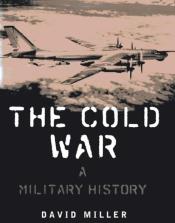
In The Cold War: A Military History, David Miller, a preeminent Cold War scholar, writes insightfully of the historic effects of the military build-up brought on by the Cold War and its concomitant effect on strategy. Bringing together for the first time newly declassified information, Miller takes readers inside the arsenals of the superpowers, describing how intercontinental ballistic missiles, submarine-based missiles, strategic bombers, and conventional weapons were employed by both sides, as well as the ways in which they were, at many points, almost brought to bear. His in-depth analysis of how military strategy shaped history, and his accounts of crises which could have turned the Cold War hot--the suppression of the Budapest uprising in 1956, and the imposition of martial law in Poland in 1981--are particularly compelling. Many books have been written about the politics in this turbulent period, but none have so comprehensively examined the military strategy and tactics of this dangerous era.
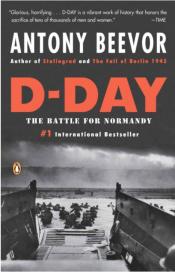
D-Day: The Battle for Normandy is the first major account in twenty years to cover the invasion from June 6, 1944 up to the liberation of Paris on August 25. It is the first book to describe not only the experiences of the American, British, Canadian and German soldiers, but also the terrible suffering of the French caught up in the fighting. D-Day will surely be hailed as the consummate account of the Normandy invasion.
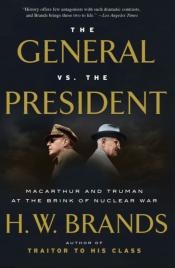
At the height of the Korean War, President Harry S. Truman committed a gaffe that sent shock waves around the world. When asked by a reporter about the possible use of atomic weapons in response to China's entry into the war, Truman replied testily, 'The military commander in the field will have charge of the use of the weapons, as he always has.' This suggested that General Douglas MacArthur, the willful, fearless, and highly decorated commander of the American and U.N. forces, had his finger on the nuclear trigger. A correction quickly followed, but the damage was done; two visions for America's path forward were clearly in opposition, and one man would have to make way. The contest of wills between these two titanic characters unfolds against the turbulent backdrop of a faraway war and terrors conjured at home by Joseph McCarthy. From the drama of Stalin's blockade of West Berlin to the daring landing of MacArthur's forces at Inchon to the shocking entrance of China into the war, The General and the President vividly evokes the making of a new American era.
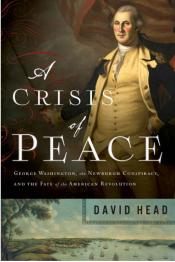
The dramatic story of George Washington's first crisis of the fledgling republic. In the war’s waning days, the American Revolution neared collapsed when Washington’s senior officers were rumored to be on the edge of mutiny. After the British surrender at Yorktown, the American Revolution blazed on and as peace was negotiated in Europe, grave problems surfaced at home. The government was broke and paid its debts with loans from France. Political rivalry among the states paralyzed Congress. The army’s officers, encamped near Newburgh, New York, and restless without an enemy to fight, brooded over a civilian population indifferent to their sacrifices. The result was the so-called Newburgh Conspiracy, a mysterious event in which Continental Army officers, disgruntled by a lack of pay and pensions, may have collaborated with nationalist-minded politicians such as Alexander Hamilton, James Madison, and Robert Morris to pressure Congress and the states to approve new taxes and strengthen the central government. A Crisis of Peace tells the story of a pivotal episode of George Washington's leadership and reveals how the American Revolution really ended: with fiscal turmoil, out-of-control conspiracy thinking, and suspicions between soldiers and civilians so strong that peace almost failed to bring true independence.
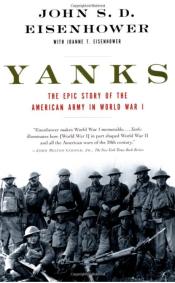
The men of the America Expeditionary Force is the subject of this history of World War I. British and French generals complained that America was giving too little, too late as their men were dying in droves on the stalemated Western Front. John Eisenhower shows why they were wrong. The European Allies wished to plug the much-needed U.S. troops into their armies in order to fill the gaps in the line. But General John J. "Black Jack" Pershing, the indomitable commander of the AEF, determined that its troops would fight together, as a whole, in a truly American army. Only this force, he argued -- not bolstered French or British units -- could convince Germany that it was hopeless to fight on. Pershing's often-criticized decision led to the beginning of the end of World War I -- and the beginning of the U.S. Army as it is known today. Throughout Yanks Eisenhower focuses on the small but expert cadre of officers who directed our effort: not only Pershing, but also the men who would win their lasting fame in a later war -- MacArthur, Patton, and Marshall. In the AEF, General John J. Pershing created the Army that would make ours the American age; in Yanks that Army has at last found a storyteller worthy of its deeds.
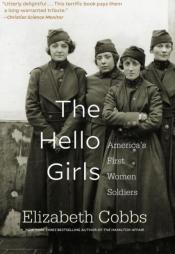
In World War I, telephones linked commanding generals with soldiers in muddy trenches. A woman in uniform connected almost every one of their calls, speeding the orders that won the war. Like other soldiers, the "Hello Girls" swore the Army oath and stayed for the duration. A few were graduates of elite colleges. Most were ordinary, enterprising young women motivated by patriotism and adventure, eager to test their mettle and save the world. The first contingent arrived in France just as the German Army trained "Big Bertha" on Paris, bombarding the frightened city as the new women of the U.S. Army struggled through unlit streets to find their billets. A handful followed General Pershing to the gates of Verdun and the battlefields of Meuse-Argonne. When the switchboard operators sailed home a year later, the Army dismissed them without veterans' benefits or victory medals. The women commenced a sixty-year fight that a handful of survivors carried to triumph in 1979. This book shows how technological developments encouraged an unusual band to volunteer for military service at the precise moment that feminists back home championed a federal suffrage amendment. The same desire to participate fully in the life of their country animated both groups, and both struggled after 1920 to reap the rewards of victory. Their experiences illuminate ways in which sex-role change was embraced and resisted throughout the twentieth century, and the ways that men and women struggled together for gender justice.
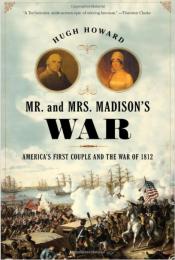
August 28, 1814. Dressed in black, James Madison mourns the nation's loss. Smoke rises from the ruin of the Capitol before him; a mile away stands the blackened shell of the White House. The British have laid waste to Washington City, and as Mr. Madison gazes at the terrible vista, he ponders the future-his country's defeat or victory-in a war he began over the unanimous objections of his political adversaries. As we approach its bicentennial, the War of 1812 remains the least understood of America's wars. To some it was a conflict that resolved nothing, but to others, it was our second war of independence, settling once and for all that America would never again submit to Britain. At its center was James Madison-our most meditative of presidents, yet the first one to declare war. And at his side was the extraordinary Dolley, who defined the role of first lady for all to follow, and who would prove perhaps her husband's most indispensable ally. In this powerful new work, drawing on countless primary sources, acclaimed historian Hugh Howard presents a gripping account of the conflict as James and Dolley Madison experienced it. Mr. and Mrs. Madison's War rediscovers a conflict fought on land and sea-from the shores of the Potomac to the Great Lakes-that proved to be a critical turning point in American history.
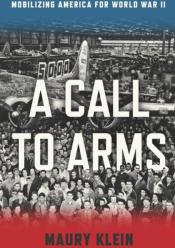
The colossal scale of World War II required a mobilization effort greater than anything attempted in all of the world's history. The United States had to fight a war across two oceans and three continents-and to do so it had to build and equip a military that was all but nonexistent before the war began. Never in the nation's history did it have to create, outfit, transport, and supply huge armies, navies, and air forces on so many distant and disparate fronts. The Axis powers might have fielded better trained soldiers, better weapons, better tanks and aircraft. But they could not match American productivity. America buried its enemies in aircraft, ships, tanks, and guns; in this sense, American industry, and American workers, won World War II. The scale of effort was titanic, and the result historic. Not only did it determine the outcome of the war, but it transformed the American economy and society. Maury Klein's A Call to Arms is the definitive narrative history of this epic struggle, told by one of America's greatest historians of business and economics, and renders the transformation of America with a depth and vividness never available before.
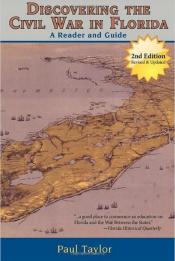
A chronicle of Civil War activity in Florida, both land and sea maneuvers. For each engagement the author includes excerpts from official government reports by officers on both sides of the battle lines. Also a guide to Civil War sites you can visit. Includes photos and maps. Sites include: Fort Pickens, Natural Bridge Battlefield State Historic Site, Fort Clinch State Park, Olustee Battlefield, Suwannee River State Park, Castillo de San Marcos, Bronson-Mulholland House, Cedar Key Island Hotel, Gamble Plantation, Yulee Sugar Mill Ruins State Historic Site, Fort Zachary Taylor State Historic Site, and Fort Jefferson State Historic Site.